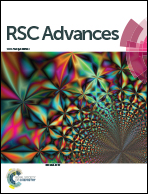C–N and C–P bond formation via cross dehydrative coupling reaction: an efficient synthesis of novel 3,4-dihydroquinazolines†
Abstract
A new methodology has been developed to construct C–N and C–P bonds through direct coupling of C–OH and N–H/P–H bonds via dehydrative cross coupling reaction. Furthermore, this protocol offers an efficient and straightforward way to access a biologically important nitrogen-heterocycle, namely, 3,4-dihydroquinazoline utilizing either an inexpensive iron catalyst or under metal-free conditions.


 Please wait while we load your content...
Please wait while we load your content...